Refs: Porges, Burroughs Family Letters and
ERB Bio Timeline
Ed Burroughs was very close to elder brother Harry, Nelly
and their children, Studley and Evelyn. For awhile, Ed and Emma lived on
the Burroughs Snake River houseboat with Harry and Nelly, George and Edna,
and Coleman and Grace. The kids remembered him very fondly for his practical
jokes, cartoons, sketches and stories. Between 1900-1903 Ed wrote his first
booklets:
SNAKE RIVER COTTON-TAIL TALES and THE VIOLET VEIL
for the kids, a family cookbook and later the much longer MINIDOKA which
was filed away and forgotten until its discovery much later and subsequent
publication in 1996. QUOTES Ed felt very close the children
having spent much time with them in Idaho and also in Chicago where they
wintered with mother, Nelly (1526 East 65th Place).
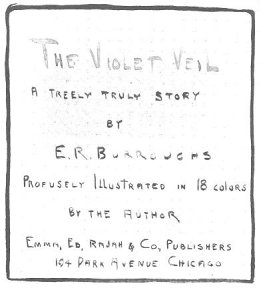
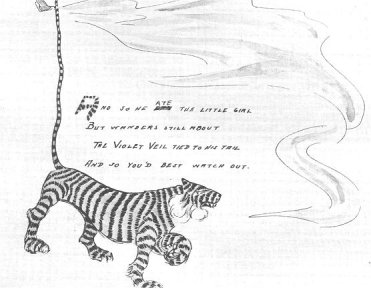
ERB had sent his first novels to Harry and Ella -- he
always felt closer to Harry who had supported him in many ways. When his
first Martian story was in progress he had brought sections to Harry and
Ella for reading and reactions. They had of course been enthusiastic about
the story, as they were later with Tarzan of the Apes. Evelyn
and Studley, through family discussions and their own reading, became familiar
with Ed's creations. Following his first successes in writing, Ed sought
Harry's advice while he was considering quitting his regular job. Cautious,
and without very much confidence in writing as a career, Harry advised
Ed to stay where he was, reminding him of his responsibilities to his wife
and children. He urged Ed to view the writing merely as a part-time occupation.
Ed's eventual major successes in selling his stories
stimulated the ambitions of Ella. Her creative abilities had been known
to the family for some time, and she had shown both imagination and ability
in her poems and stories. Her fictional themes were not of fantasies such
as Ed's, but dealt rather with human relationships, simple characterizations,
and realistic settings.
In her long story, "The
Bride," which appeared in 1913 in the popular magazine The Metropolitan,
she created a situation in which a delicate protected Southern girl finds
herself, as a young wife, abruptly transferred to a ranch in a rough frontier
area. Here, Nellie may have been recalling her own Southern background
and her unanticipated experiences after she had married Harry and moved
with him to Idaho where she faced a difficult adjustment to life in a primitive
country.
"The
Bride" is full of autobiographical references:
the Southern "bride" is a writer,
she is called "Mary" (ERB's grandmother was called Mary),
her husband is called John (a much-used family name which
was also used throughout ERB's writing - John Carter, John Clayton),
the YY (Yale) ranch in
a typical Idaho range country,
gold dredging activities
the colour grey is much used (grey-eyed heroes, Greystoke,
etc.)
the son is an artist (Studley Burroughs)
descriptions of the ranch buildings and inhabitants,
etc.
ERBzine will debut this rare short story from the Danton
Burroughs' Family Archive at the 2011 Dum-Dum in Pocatello, Idaho.
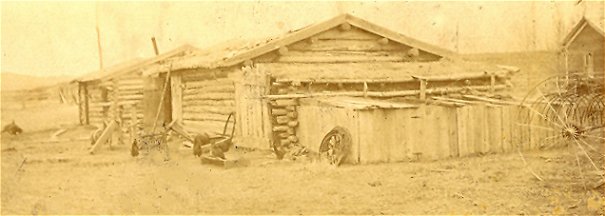
Cook House with Blacksmith Shop, etc. ~ Yale, Idaho
See more photos at: ERBzine
1646
As a writer Ella displayed a skill in description and
in the development of atmosphere, but beyond this she reveals an unusual
sensitivity in painting the intense feelings, the inner struggle, of the
bewildered young bride. For the bride's artist son, Ella's model was obviously
her son Studley and in this creation she was expressing all her hopes for
his future. Studley was then displaying an interest in drawing and painting
and would later illustrate some of his uncle's books.
In the summer of 1913, possibly at her request, Ed sent
a group of her stories to Thomas Metcalf. While there is no record of his
evaluation, it is possible that Ella's stories did not contain sufficient
elements of action and of excitement or adventure to meet All-Story's
requirements.
Still impressed with his sister-in-law's artistic talents,
two years later Ed wrote his film producer Selig to ask that she be given
a tryout as an actress. "It is not the emotional notoriety-longing of
a young girl," he said," but the desire of a mature woman to utilize
her talents and training for purposes of bread winning. . . . It is with
a full realization of the fact that you must be bored to death with similar
requests from people who have a right to ask favors of you, which I have
not, that I ask this of you."
Selig's reply, sent from Los Angeles, was courteous: ".
. . upon my return will be pleased to give your sister-in-law a fair trial.
Will keep you posted as to the exact time of my return to Chicago." There
is no record of her having made this tryout with Selig.
Some time later Ed made a another recommendation to Metcalfe
in which he praised the artistic abilities of his nephew Studley. He
had from an early age shown unusual skill in drawing and illustrating and
had chosen to make art his field of study.
"By the way, if my nephew cared to submit a cover
design with one of my future stories would it receive consideration? He's
a mighty clever young chap, and I don't know of anyone I'd rather see him
get a start with than you. He's doing fairly well now, but nothing very
steady, and his work is improving wonderfully. Metcalf agreed to consider
a submission.
Ella's early interest in writing poetry had been illustrated
in her poem dedicated to Major George Burroughs and his wife Mary Evaline,
printed in the Memoirs
of a War Bride. The poem of fourteen lines, all rhyming complex,
was dated November 23, 1914.
War Bride poem
Richer than any dream of hoarded gold,
Inheritors of virtues manifold,
We count in strength of body and of mind,
The Power of Conquest they have left behind.
"Man lives not to himself alone," and they
Whose Page of Drama we may read today,
By self-denial, industry and thought,
Have lived for us and our endowment bought,
Each generation of another day
This Debt of Honor, then, is yours to pay --
By Soldier courage and sweet woman's grace.
With simple Truth and Goodness thus to trace
As fair a record with us little blame,
As they who gave uo us their honored name.
Ella Oldham Burroughs,
November 23, 1914
In later years four of Ella's poems were published in a volume
titled
Illinois Poets, An Anthology of Writings by Sixty-Four Poets.
Henry Harrison, publisher, New York, 1935. The poems are titled "Wing-time,
Ring-time" "Inca Love Song," "Midsummer," and "The Song." Ella wrote conventional
poetry using rhyme and meter.
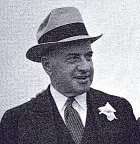 Ed
had maintained an irregular contact with brother Harry who, from 1923 on,
had been employed by insurance companies in Chicago. One of Ed's repressed
hopes was to have Harry and his wife Ella living close by in California.
In 1927 Ed tried to arrange a position for Harry as West Coast representative
for the Rothacler Industrial Film Corporation, but the plan did not materialize.
He had often urged Harry to try writing in his spare time, believing that
his brother's colorful experiences in Idaho could provide a rich source
of material. On December 18, 1929, Ed wrote:
Ed
had maintained an irregular contact with brother Harry who, from 1923 on,
had been employed by insurance companies in Chicago. One of Ed's repressed
hopes was to have Harry and his wife Ella living close by in California.
In 1927 Ed tried to arrange a position for Harry as West Coast representative
for the Rothacler Industrial Film Corporation, but the plan did not materialize.
He had often urged Harry to try writing in his spare time, believing that
his brother's colorful experiences in Idaho could provide a rich source
of material. On December 18, 1929, Ed wrote:
"You are the one who should have been the writer, not
I. You have every qualification, nearly all of which I lack, but for God's
sake do not try to write fiction, unless it comes to you very easily. There
is today a better market for nonfiction than there ever has been in the
history of writing."
Ed suggested that Harry begin by describing informally
his early days on the Bar-Y cattle ranch: "Put plenty of Sam Land and
Mac Harberson in it, of cattle thieves and reminiscences of old timers,
a description of Blanco and all of the interesting characters you knew
in Idaho. Get Lew in (Lew Sweetser) with his get-rich-quick schemes . .
. Do not forget Emma the cow, nor the red Irish setter you nearly killed
with a neck yoke. . . "
Ella Oldham Burroughs, was killed in a car accident on
March 30, 1933, near Ann Arbor, Michigan. She and Harry had shared a strong
affection, and some years later Harry became involved in unusual psychic
experiences as he sought to contact his wife. From his old friend
Lew Sweetser, then living in Hollywood, whose wife had died in 1936, Harry
heard reports of written messages from the spirit world. Harry placed little
credence in the claims that Sweetser's wife had communicated with her husband.
In an account published in the Yale Class Record, 1939
Supplement, he noted, ". . . . I had for years been convinced that
there could be no conscious existence after death." He explained what
followed: However, I asked if he would introduce me to the automatic
writer through whom he had obtained these messages. he did so and the results
of my first interview with her were truly amazing and revolutionary.
My long held belief that 'death was the end' was destined to be rudely
shattered, when I actually received messages from my wife . . . About Feb.
15, 1937, I received the first of these messages and have had numerous
others since then, each tending to confirm my belief in their genuineness.
Gone is my conviction that 'death ends all.' The motive for the deceit
on the part of the automatic writer is discounted by the fact that she
persistently refused to accept any remuneration for her services.
See previous seances in young George and Harry's letters
from camp:
ERBzine 1050
~ ERBzine 1096
Following the death
of his longtime friend Harry in 1940, Lew expanded his old "mysticism/spiritualism"
lectures into a book: The Inner Voice Reveals (1943: DeVorss
and Co.).


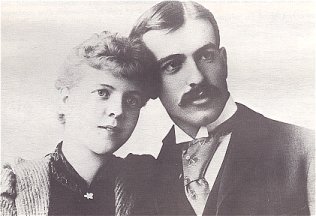
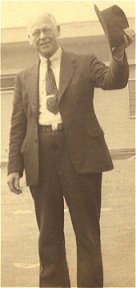
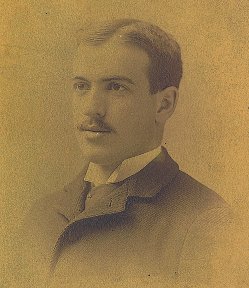
![]()

![]()